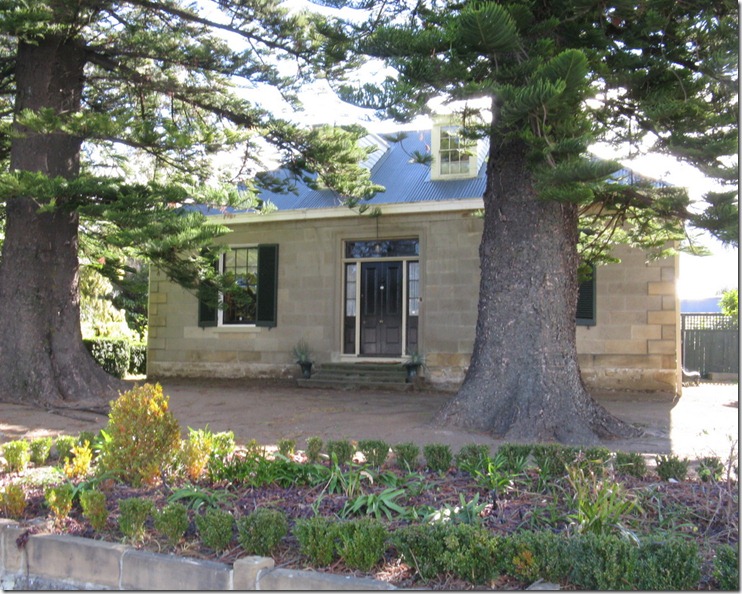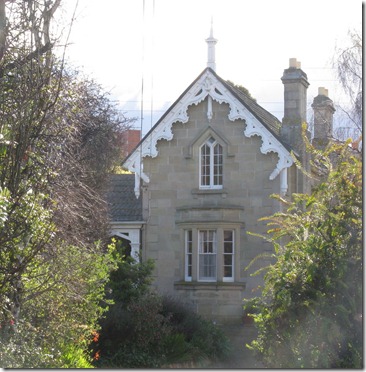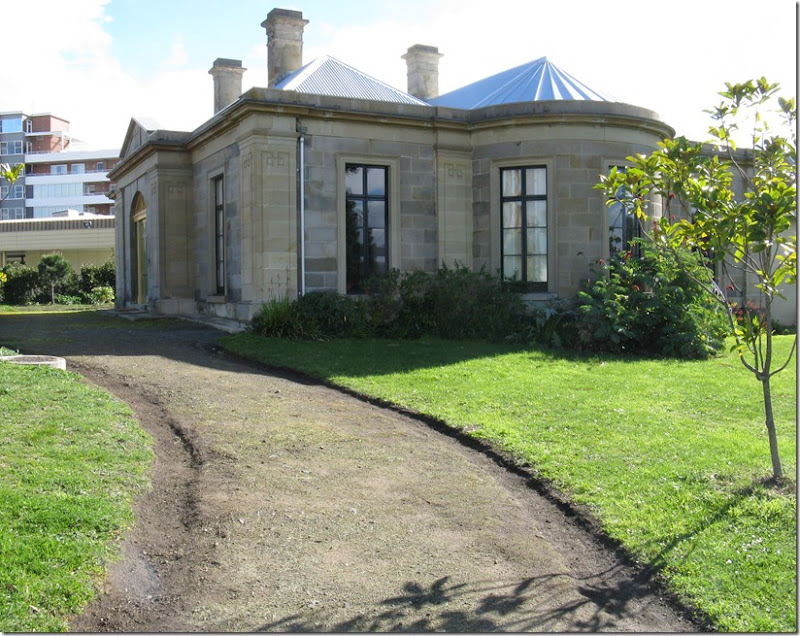Burrows Tannery
Samuel Burrows bought land that was part of Poplarville in 1846 and built a house and his son established tannery there in 1869. The operation grew and produced disagreeable and offensive smells and neighbours tried unsuccessfully in 1894 to have it closed. Four of the wealthy neighbours eventually bought it in 1906 and closed the tannery down. In 1942 it became a plant nursery so the nature of the smell changed to a more agreeable odour.
Poplarville
This land was also part of the Swanston property with the building being constructed in 1844 or soon after. The owner, Henry Pearce planted the Norfolk Island pines in 1856 and they have grown to dominate and shade the house. The Pearce family owned the property for 110 years before subdividing it and finally selling the old stone residence.

Lauderdale
The land was originally part of a larger estate owned by Charles Swanston who sold this portion in 1844 to John Mezgar, a publican who had Lauderdale built. It was bought by the Jordan family and then was passed on to the Tolman family who preserved and maintained the house and gardens until 2004. It was the only example of a colonial cottage with an adjoining orchard. The future of the property is now somewhat uncertain.
Clonsilla - Cawarra
John McGrath purchased 4 acres on the northern side of Risdon Road in November 184
 5 and lived in a cottage near the railway embankment. In 1856 he arranged for Lieutenant-Colonel Robert Hamilton to build a new house, named Clonsilla, which Hamilton would rent. Hamilton had some notoriety for using government resources for private building purposes. David Hood purchased the property in 1864 for £1000. By 1903 when it was purchased by James Taylor it was named Cawarra and when advertised for sale in 1950 it was over one hundred years old and it was beginning to show its age. Cowarra we purchased by Stewart MacGregor who successfully restored the properly at a time before the value of preserving historic buildings was widely recognised.
5 and lived in a cottage near the railway embankment. In 1856 he arranged for Lieutenant-Colonel Robert Hamilton to build a new house, named Clonsilla, which Hamilton would rent. Hamilton had some notoriety for using government resources for private building purposes. David Hood purchased the property in 1864 for £1000. By 1903 when it was purchased by James Taylor it was named Cawarra and when advertised for sale in 1950 it was over one hundred years old and it was beginning to show its age. Cowarra we purchased by Stewart MacGregor who successfully restored the properly at a time before the value of preserving historic buildings was widely recognised. The information has been taken with permission from the publication Story of New Town Bay by Donald Howatson. It is available for purchase from the New Town Newsagency on New Town Road.
For the full story go to the web site

